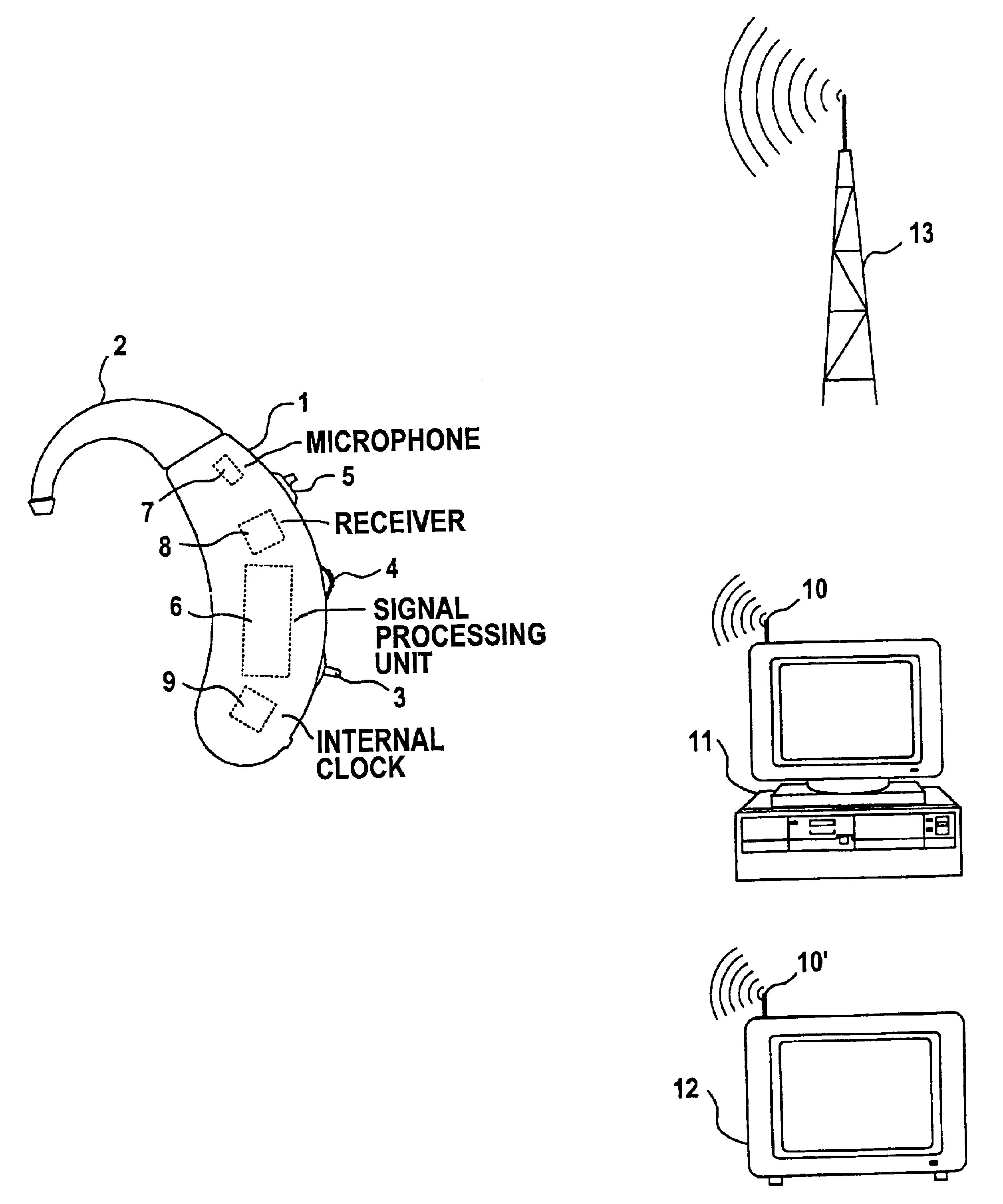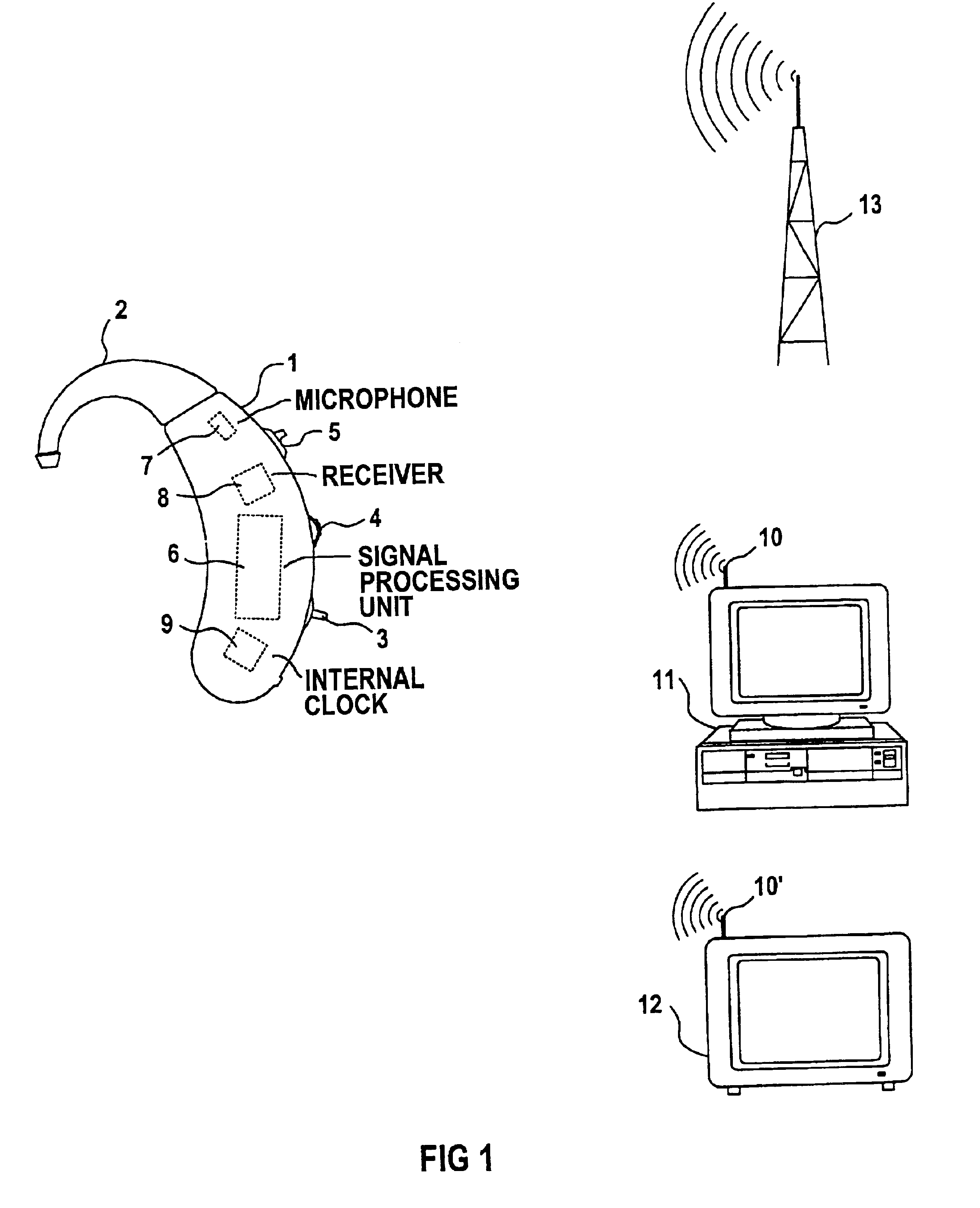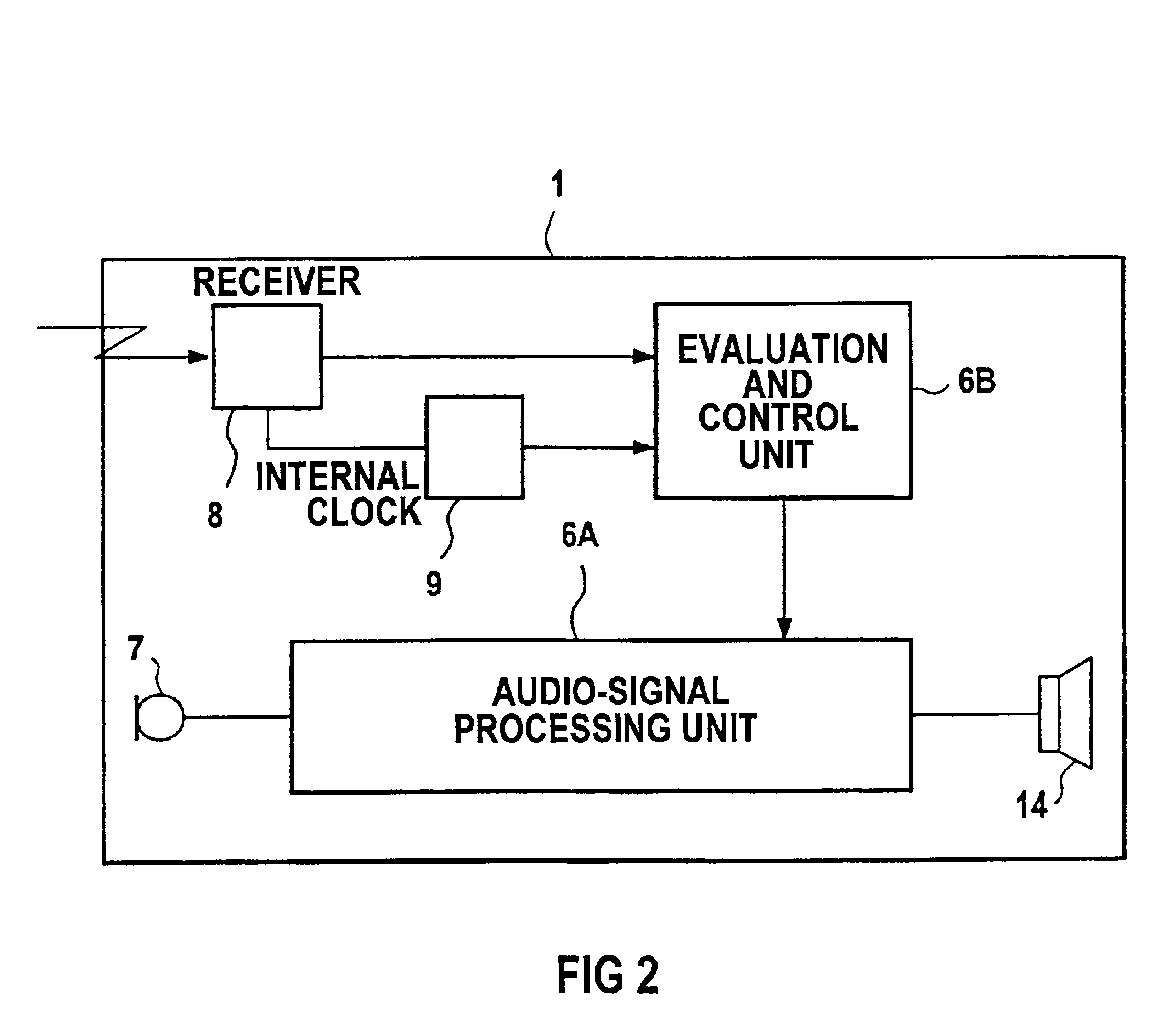Method of operating a hearing aid and hearing-aid arrangement or hearing aid
- Summary
- Abstract
- Description
- Claims
- Application Information
AI Technical Summary
Benefits of technology
Problems solved by technology
Method used
Image
Examples
Embodiment Construction
The hearing aid 1 which can be worn behind the ear, according to FIG. 1, comprises a supporting hook 2, an MTO switch 3 for switching off the hearing aid (O) and for choosing signal recording via the microphone (M) or a telephone coil (T), a volume adjuster 4 and a program selection button 5. Furthermore, for signal processing, the hearing aid 1 has the signal processing unit 6. For adapting the hearing aid 1 to different hearing situations, different sets of parameters of the signal processing unit 6 can be activated. For automatically choosing a hearing program and consequently a set of parameters for the signal processing unit 6, the output signal of the microphone 7 is analyzed. In order to improve the automatic identification of the current hearing situation, the hearing aid 1 also has a receiver 8. This is designed for receiving the signals emanating from the external transmitters 10, 10′, 13. In this case, a time signal emanates from the transmitter 13 and a transmitter-speci...
PUM
 Login to View More
Login to View More Abstract
Description
Claims
Application Information
 Login to View More
Login to View More - R&D
- Intellectual Property
- Life Sciences
- Materials
- Tech Scout
- Unparalleled Data Quality
- Higher Quality Content
- 60% Fewer Hallucinations
Browse by: Latest US Patents, China's latest patents, Technical Efficacy Thesaurus, Application Domain, Technology Topic, Popular Technical Reports.
© 2025 PatSnap. All rights reserved.Legal|Privacy policy|Modern Slavery Act Transparency Statement|Sitemap|About US| Contact US: help@patsnap.com



